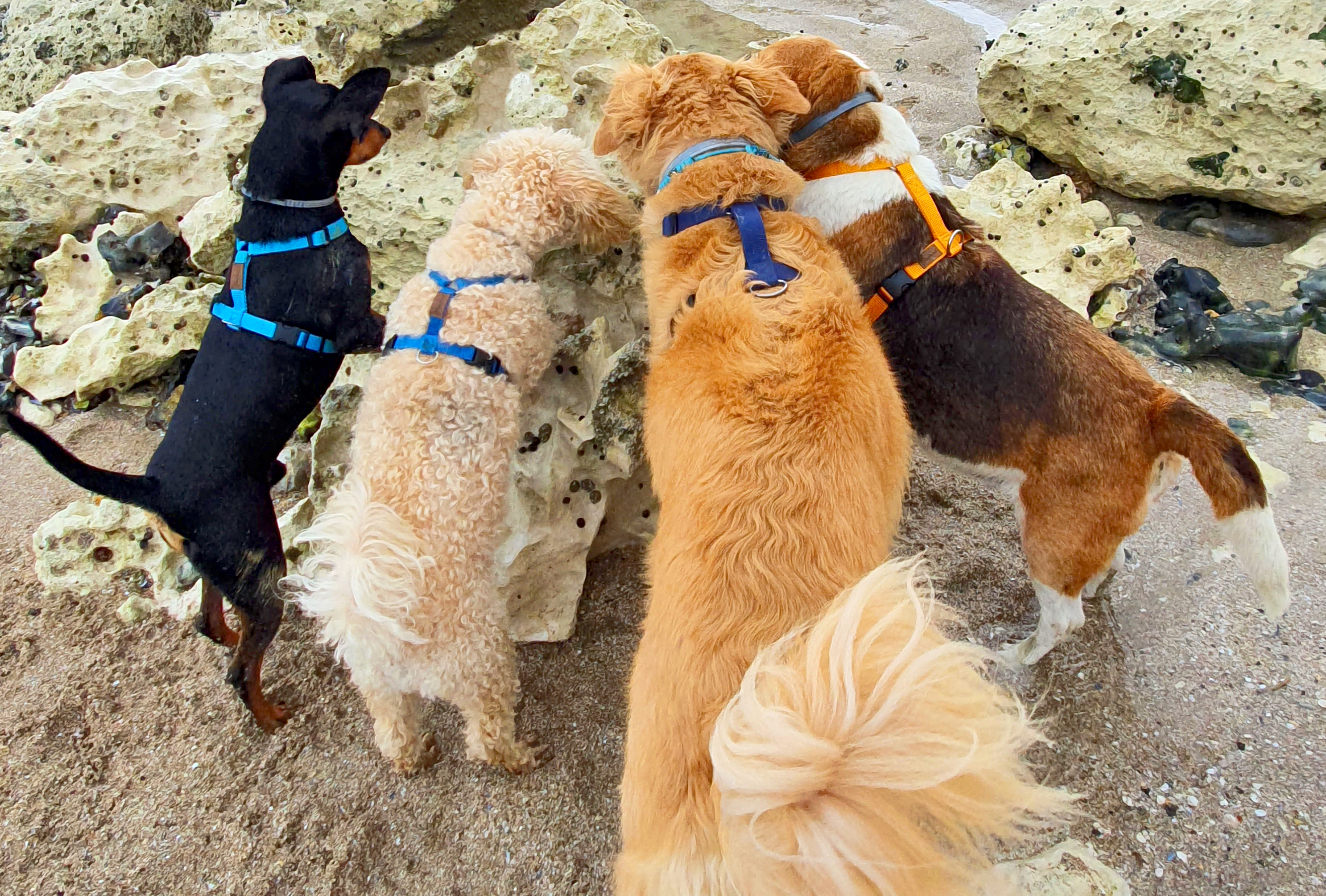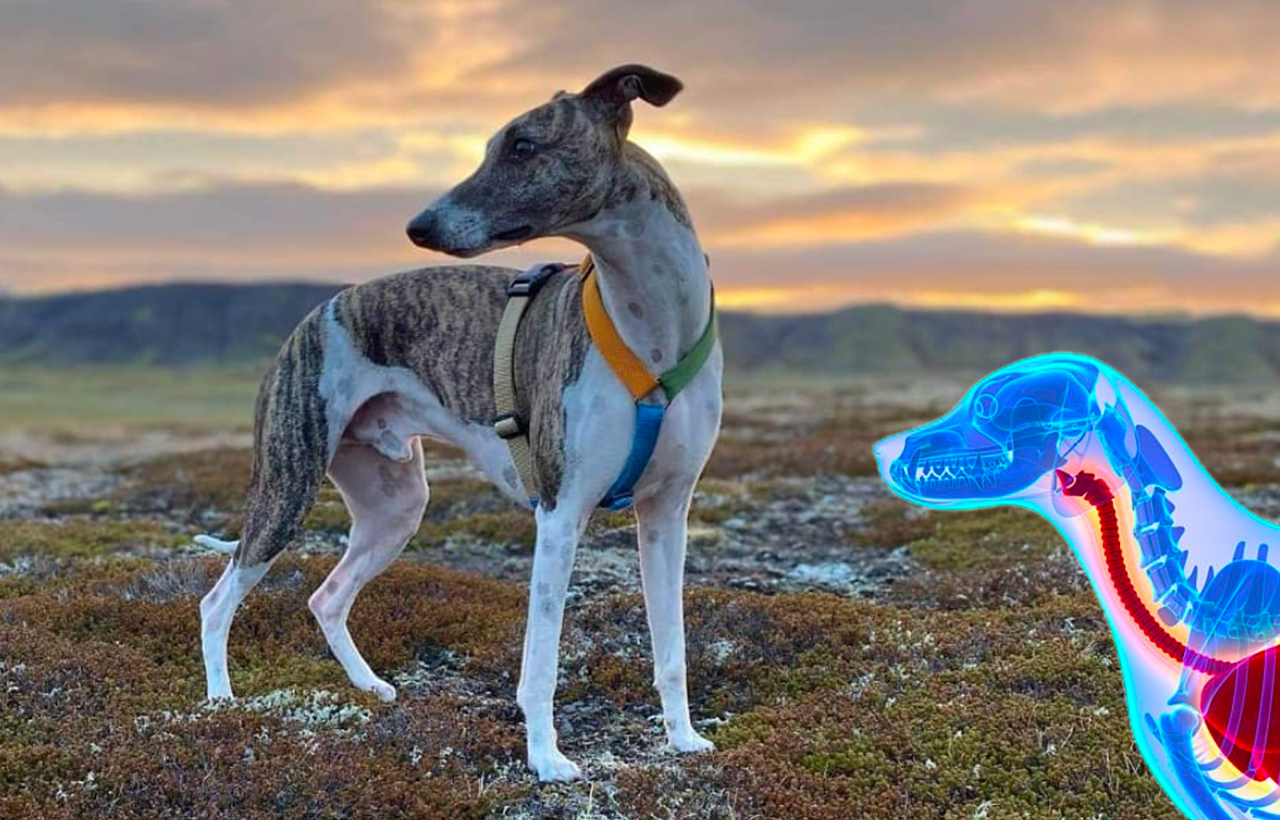BRIEF : Choosing a (Haqihana) harness for your dog's health.

Every decision we make for our four-legged friends reflects our love and commitment to their well-being. One of the most significant choices involves how we accompany them on our walks together. For a long time, the collar has been the most widespread tool to keep our dogs by our side. But today, a gentler and more thoughtful alternative is gaining ground: the harness!
This draws our attention to a reality often underestimated: the impact of a collar on the physical and emotional well-being of our companions. Recent research has unveiled the potential dangers of collars, from the unnecessary pressure it places on a dog's neck to more serious effects on their overall health. In light of these findings, the harness (Haqihana) emerges as an indispensable solution, offering an alternative that respects the freedom and comfort of our animals.
By choosing a harness, we opt for freedom rather than restriction, support rather than constraint. This article invites you to discover how a simple change can positively transform your daily outings, making every walk a shared moment of pleasure.
Scientific Insight: Understanding the Impact of Collars and Harnesses
The first pioneering study was conducted by Anders Hallgren in 1992, which highlighted the surprising consequences of traditional collar use. Examining 400 dogs, Hallgren found that 63% of them suffered from spinal abnormalities. Even more disturbing, 91% of dogs that had been exposed to strong or constant leash tugging exhibited neck defects. This research was an alarm bell, revealing the direct link between collar pressure and musculoskeletal issues in dogs.
A second study, published by Pauli AM et al. in the "Journal of the American Animal Hospital Association" in 2006, focused on the effects of collar pressure on intraocular pressure in dogs. The findings showed that dogs wearing collars experienced a significant increase in this pressure, compared to those fitted with harnesses. These data suggest that the use of collars could increase the risk of eye disorders in dogs, reinforcing the argument for harnesses as a safer alternative.
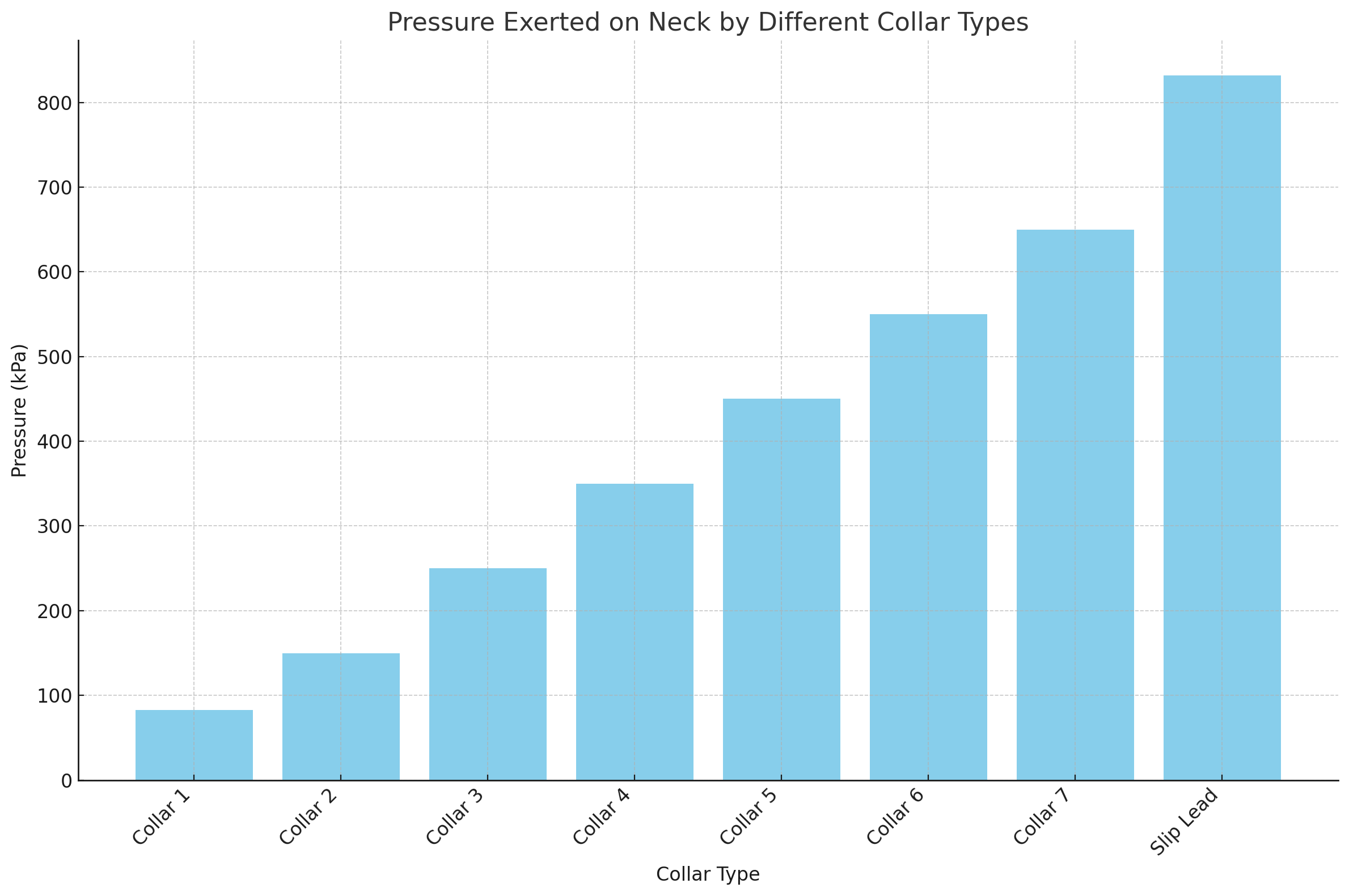 Finally, a 2020 study by Carter A, McNally D, and Roshier A, further explored the physical impact of collars, concluding that even the lightest pressure could cause tissue damage and pain. The risk of injury is high with collars, particularly due to increasing or transient pressures related to leash jerks, highlighting the importance of a gentler alternative for dogs.
Finally, a 2020 study by Carter A, McNally D, and Roshier A, further explored the physical impact of collars, concluding that even the lightest pressure could cause tissue damage and pain. The risk of injury is high with collars, particularly due to increasing or transient pressures related to leash jerks, highlighting the importance of a gentler alternative for dogs.
These studies converge towards a clear conclusion: choosing a harness (Haqihana) is not only an empathetic decision towards our dogs' physical well-being but also a practice grounded in scientific evidence. By prioritizing freedom and comfort through the harness, we offer our four-legged companions the best chance for a healthy, long, and happy life, free from unnecessary constraints and pressures.
Protecting Vital Organs
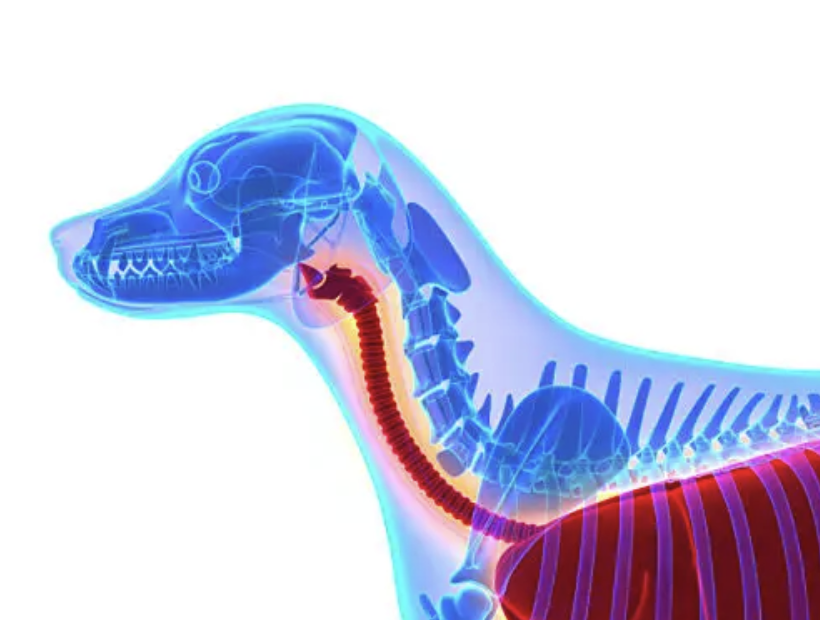
Using a collar poses notable risks to our canine companions' health, especially regarding the trachea. Composed of C-shaped cartilaginous rings and crucial for breathing, the trachea can collapse under constant pressure or sudden tugs typical of a collar. This phenomenon can lead to severe symptoms ranging from chronic coughing, difficulty swallowing, and even respiratory distress, severely compromising the dog's quality of life.
The muscles of a dog's neck, in particular, play a constant role against gravity to maintain its head in a balanced position. Their work is even more critical as the center of gravity of the dog's head is located outside its base of support. When these muscles are subjected to unnecessary pressure due to a collar, it can not only cause pain but also negatively influence the entire body movement of the dog.
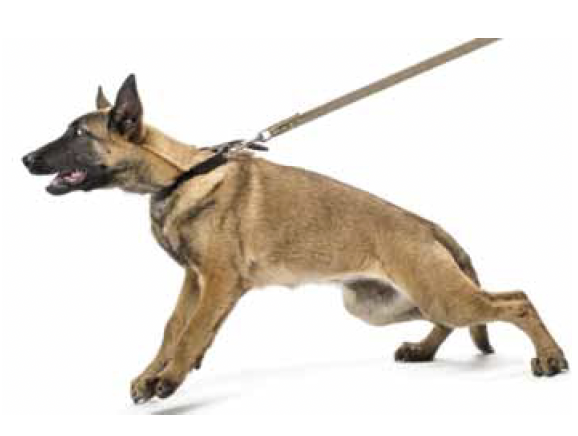 This underscores the importance of understanding the impact of the choices we make for our dogs. Just as a "whiplash" can affect humans, the pressure around a dog's neck negatively impacts vital organs such as the larynx, esophagus, thyroid, nerves, etc., leading to various health problems.
This underscores the importance of understanding the impact of the choices we make for our dogs. Just as a "whiplash" can affect humans, the pressure around a dog's neck negatively impacts vital organs such as the larynx, esophagus, thyroid, nerves, etc., leading to various health problems.
Faced with these findings, the option of a well-fitted harness (notably in Y or H shapes) appears as a respectful solution to your dog's health. This design ensures that the neck remains free from any pressure, resting the load on the thorax and thus preserving the integrity of vital organs and natural muscle function. For those who wish to deepen their understanding of the impacts of a collar on a dog's health, we invite you to consult this brochure. (available in 13 languages here)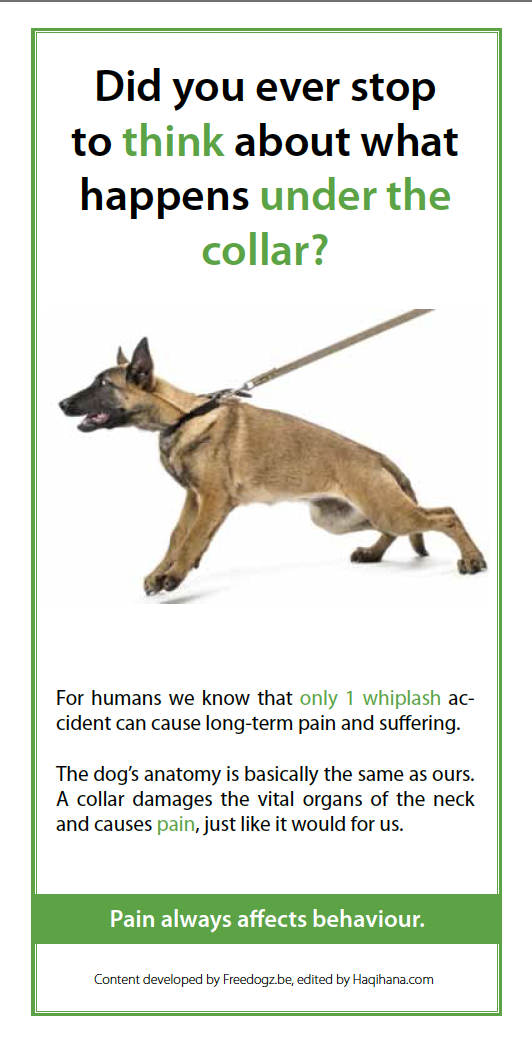
Advantages of Y or H* Harnesses
The design of a dog harness is not limited to its functionality but also affects their physical and psychological well-being. Among the different models available on the market, those in Y or H* shapes stand out for their significant health and comfort benefits for dogs. These innovative designs offer a thoughtful alternative to traditional collars, focusing on freedom of movement and reducing pressure on the neck and trachea of the animals.
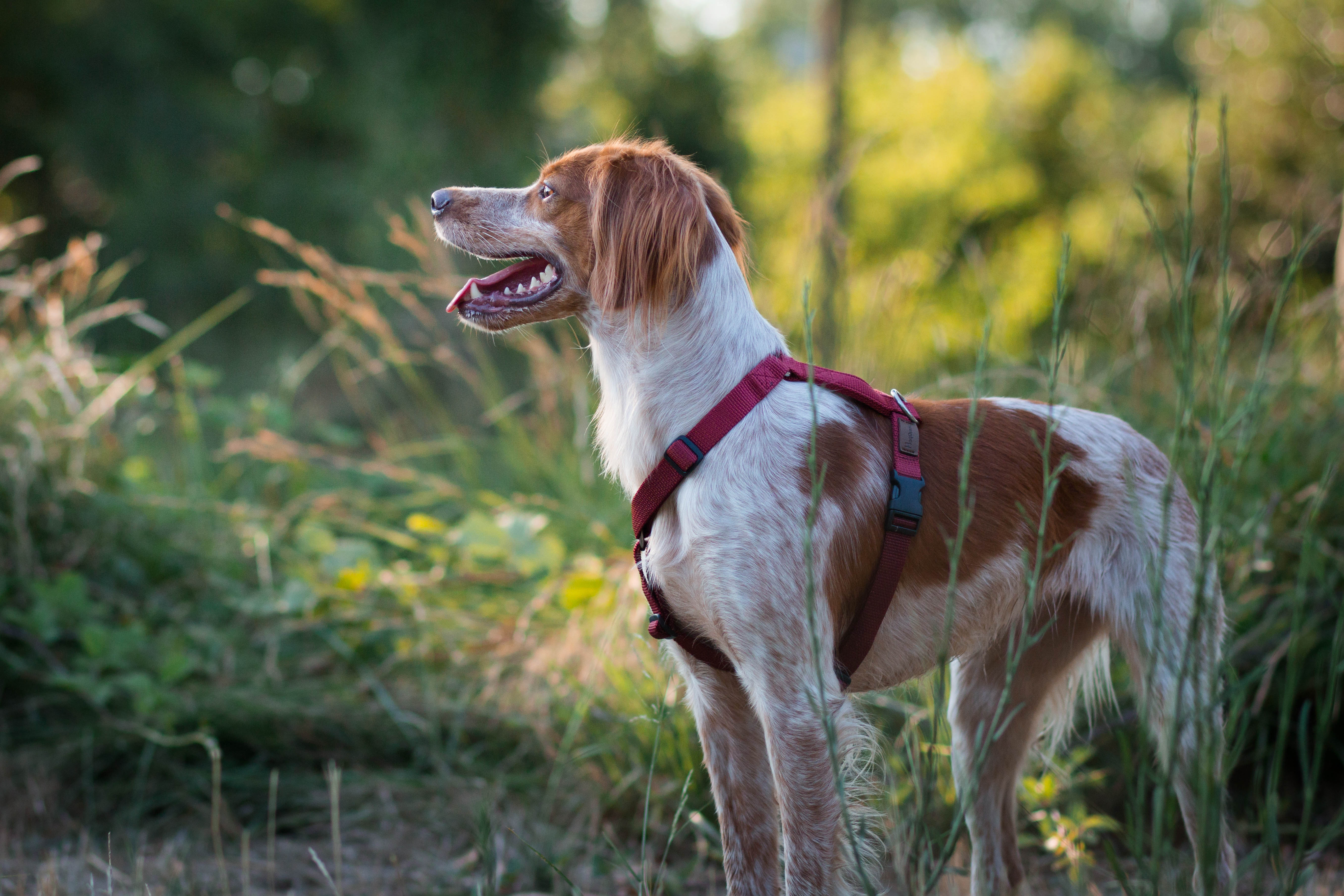
It's essential to note that not all harnesses are equal in terms of respecting canine morphology. Unlike other options that may hinder movement or exert inappropriate pressure on certain body parts, Y or H* shaped harnesses are specifically designed to fit the natural structure of the dog. These models ensure that the harness adjusts harmoniously without restricting shoulder movements and without exerting pressure on the neck, thus allowing total freedom of movement. This attention to the dog's morphology is crucial, as it not only guarantees optimal comfort during walks but also helps to prevent the risks of injuries and discomfort.
These harnesses, by wrapping the body without hindering natural movements, ensure an even distribution of force when pulling on the leash, thus avoiding the risks of injuries and irritations. Their design takes into account the natural structure of the dog, especially around the scapula, a key area for locomotion which, contrary to popular belief, represents the real pivot of the front legs, not the shoulder as in humans.
This approach is corroborated by the work of Professor Martin Fisher, who, through his extensive research on dog locomotion in Germany, demonstrated the importance of not restricting this critical area. His studies on hundreds of dogs reveal that to maintain a healthy and natural movement dynamic, it is crucial that the harness does not hinder the scapula. This not only keeps an optimal line of vision and balance but also preserves the animal's essential motor skills.
In summary, choosing a Y or H* harness is part of a deeply thoughtful approach aimed at respecting and protecting the natural physiology of our canine companions, thus ensuring walks that are both enjoyable and beneficial.
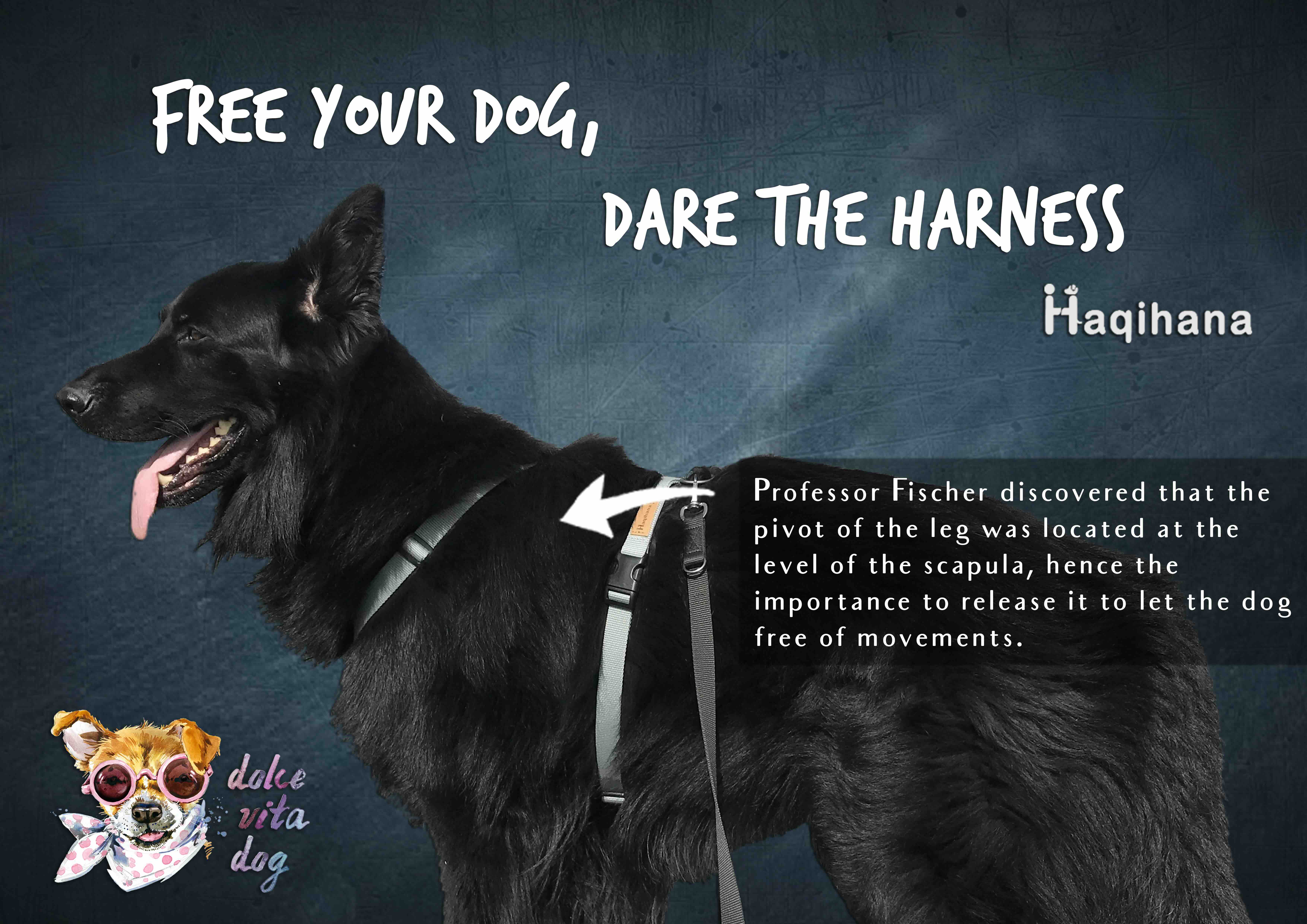
The Haqihana Harness: An Example of Perfection
The Haqihana harness stands out as an embodiment of excellence in the field of dog accessories. Recognized since 2003 for its commitment to canine well-being, each Haqihana harness is the result of meticulous Italian craftsmanship, combining aesthetics, comfort, and functionality to perfection.
Handcrafted with high-quality and exclusively European materials, the Haqihana harness ensures non-toxicity and hypoallergenicity, thus respecting the sensitivity of each companion. Its custom design at five critical points guarantees a perfect fit for all sizes and shapes of dogs, including those with deep chests, offering an exceptional wearing experience without compromising comfort or safety.
Its ergonomic design offers a notable feature: it avoids any uncomfortable contact under the armpits, an area often prone to irritation with less well-designed harnesses. By eliminating the risk of rubbing, the Haqihana ensures a comfortable walk for the dog, without the discomfort associated with prolonged wear in this sensitive region.
What truly distinguishes the Haqihana harness is its ability to evenly distribute the pressure exerted during leash tugging, thus avoiding any discomfort, pain, or constriction sensation for the dog. It facilitates complete freedom of movement, allowing dogs to move with ease and confidence.
Conclusion :
In conclusion, harnesses offer a safer and more comfortable alternative, evenly distributing pressure around the dog's body rather than on its delicate neck. This approach reduces the risk of injuries, pain, and long-term health problems, allowing your dog to fully enjoy each walk, with freedom of movement and ease that strengthen your bond. At DolceVitaDog, we firmly believe that every dog deserves to live its daily adventures in utmost comfort, without compromising its health or well-being.
The health and comfort of our canine companions should always be at the forefront of our decisions. This is why we exclusively adopt Y-shaped harnesses. Far from being a mere preference, this choice is the result of in-depth reflection on the tangible benefits offered by the harness compared to traditional collars, as we firmly believe this approach is fundamental to allowing your dog to fully enjoy every moment spent by your side, freely and without pain.
We invite our community to share their experiences and stories. Have you noticed a difference in your dog's behavior since switching to a harness? Does your companion seem more comfortable and happier during walks? Also share this article to inform other owners about the significant advantages of choosing a harness. At DolceVitaDog, we are dedicated to promoting a quality life for our canine friends, and your contribution is valuable in enriching our mission.
Together, let's make every walk a positive and liberating experience. So, Free your dog and Dare the Haqihana Harness!
Written by Aurélien Budzinski - DogFieldStudy.com
* Y-shaped harness seen from the front or H-shaped seen from above
